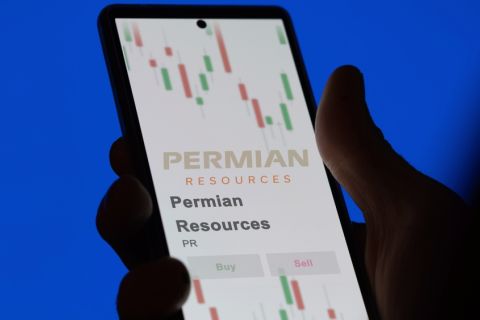The deep waters of the Gulf of Mexico have already delivered abundant discoveries, yet the prolific province is still in an early stage of exploration. During 2002, deepwater wells in the Gulf produced nearly 1 million barrels of oil and 4 billion cubic feet of gas per day, contributing 17% of the nation's oil and 7% of its gas production, according to the U.S. Department of the Interior's Minerals Management Service. These volumes are steadily rising, as a dozen deepwater projects came onstream in 2003 and 13 more are projected to begin flowing oil and gas this year. Since January 2000, deepwater discoveries have added 4.5 billion barrels of oil equivalent (BOE) to the nation's proved reserves, and this has been accomplished with a relatively small number of wells. That's because deepwater discoveries are much larger than those in shallow water: during the last 10 years, the average shallow-water field added 5 million BOE in proved and unproved reserves, while an average deepwater field added more than 86 million. Individual deepwater wells are also highly prolific, and the impressive daily rates have been a driving factor behind the success of deepwater operations, according to the MMS. In 1992, a well in Bullwinkle Field, operated by Shell, produced about 5,000 barrels of oil per day. In early 2002, a single well in BP's Horn Mountain Field came onstream at more than 30,000 barrels per day. Gas wells have exhibited the same trend: deepwater flow-rates were topping out at about 25 million cubic feet per day until Shell's Popeye Field raised the bar to 100 million per day in 1996. An oil well in Troika Field that made 41,532 barrels of oil per day and a gas well in Mica Field that flowed 145 million cubic feet of gas per day hold the records today for single-well production rates. BP operates Troika, and ExxonMobil Corp., Mica. Shorter cycle times have also improved economics. The expanding infrastructure and increasing operator experience in the deep offshore mean that projects are brought into production quicker. The average time span between the acquisition of a lease and first production has now dropped to less than seven years. Shell's Auger project took 10 years to move from lease acquisition in 1985 to exploration in 1987 to production in 1994. ChevronTexaco's Typhoon project, however, sped from lease acquisition in 1995 to drilling in 1998 and first production in 2001. And Kerr-McGee's Constitution Field, on a lease that was awarded in 2001, is expected to begin production in 2006. A detailed look at the number of fields discovered and their size indicates that the exploration in the deepwater Gulf is in its adolescence, and substantially more oil and gas remain to be discovered, the MMS reports. Recently, intriguing discoveries have been drilled in Paleogene reservoirs in the Walker Ridge and Alaminos Canyon areas, and the first deepwater finds have been made in the eastern Gulf. Other developing plays are near the Sigsbee Escarpment south of Keathley Canyon, and beneath salt canopies. And, the traditional minibasin plays continue to yield discoveries. The future of the deep Gulf appears productive, according to the MMS. Today's frontier lies in water depths greater than 7,000 feet, and wells have been drilled in more than 10,000 feet of water. Presently, 11 accumulations have been found in waters deeper than 7,000 feet. The MMS notes that the deep water is expected to contain ultimate reserves of approximately 71 billion BOE, with 56.4 billion of that yet to be discovered. A trend of note has been the increasing presence of independents in deeper water. Through 1996, the Gulf's nether-region was exclusively the province of major oil companies. Now, independents own 25% of deepwater oil and 30% of deepwater gas production. And, opportunities exist for new companies to enter the play and existing players to expand their holdings. Some 3,000 deepwater leases were issued between 1996 and 1998, and many of these have not been drilled. A prodigious number of these leases will be relinquished in the next few years, as operators will be unable to test many prospects before their leases expire, due to the limited fleet of deepwater drilling rigs. Still, some giants surely await in these late-term leases. Top prospects sometimes take years to generate, as 44% of deepwater hydrocarbon volumes have been found in leases in their eighth year of term or later.
Recommended Reading
Baytex Prices Upsized Private Placement of Senior Notes
2024-03-15 - Baytex intends to use the proceeds to pay a portion of outstanding debt on its credit facilities and general corporate purposes.
Prairie Acquiror Announces Offering of $400MM Senior Notes
2024-02-21 - Prairie Acquiror intends to use the notes offering to refinance outstanding debt under its existing term loan credit facility.
Equinor Releases Overview of Share Buyback Program
2024-04-17 - Equinor said the maximum shares to be repurchased is 16.8 million, of which up to 7.4 million shares can be acquired until May 15 and up to 9.4 million shares until Jan. 15, 2025 — the program’s end date.
Stockholder Groups to Sell 48.5MM of Permian Resources’ Stock
2024-03-06 - A number of private equity firms will sell about 48.5 million shares of Permian Resources Corp.’s Class A common stock valued at about $764 million.
PrairieSky Adds $6.4MM in Mannville Royalty Interests, Reduces Debt
2024-04-23 - PrairieSky Royalty said the acquisition was funded with excess earnings from the CA$83 million (US$60.75 million) generated from operations.





